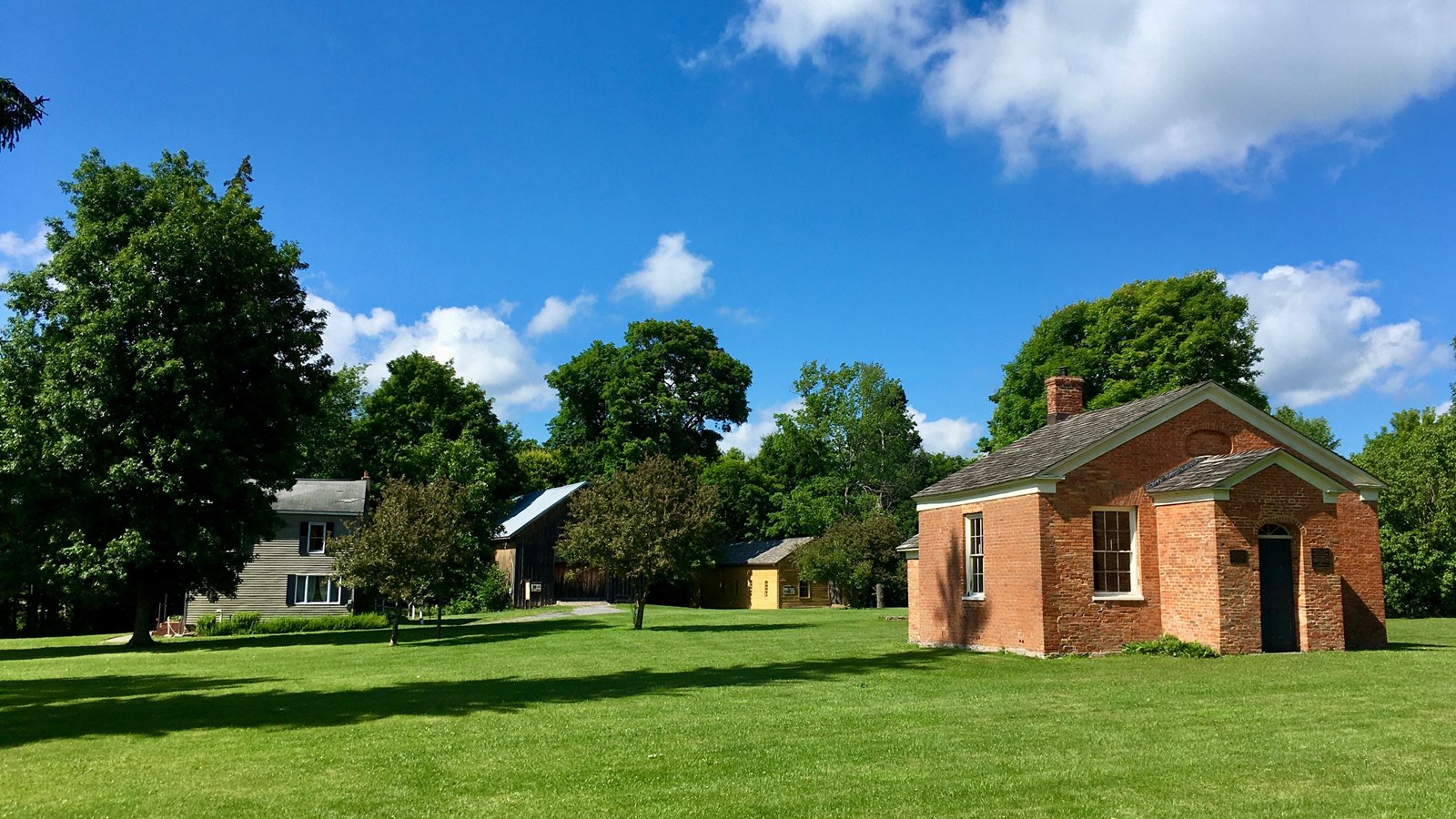Last updated: March 4, 2022
Place
Gerrit Smith Estate

Smithfield Community Association
Gifts/Souvenirs/Books, Restroom
Gerrit Smith, the wealthiest landowner in New York State, believed that his wealth was a divine gift to give away to those less fortunate than he. He donated a billion dollars (in today’s currency) to support human rights – preferring to give directly to individuals rather than large institutions. He purchased the freedom of enslaved individuals, gave away 120,000 acres to free Black males to enfranchise them, donated thousands of dollars to biracial colleges, and paid mortgages as gifts for neighbors. Smith’s home in Peterboro was a last stop on the way to Canada for freedom seekers and a safe place for them to stay and build lives for themselves and their descendants.
The Smith home was a therapeutic haven for abolitionists who found monetary, emotional, and social support during stays. Smith deeded hamlet property to young black abolitionists William G. Allen, Henry Highland Garnett, Jermain Wesley Loguen, Samuel Ringgold Ward, and Lewis Washington.
Tubman biographer Kate Clifford Larson wrote in Bound for the Promised Land: “Many were deeply concerned for Tubman’s continued safety, … and that of her family.” Smith felt so concerned that in 1861, he accompanied Tubman to Canada. In spite of the continuing threats to her safety, Tubman seemed relaxed and at ease at the Smiths’ residence – “The Big House,” as Tubman called it. She found a warm welcome from Gerrit Smith and his family. When Harriet’s mother Rit was not well, she spent time recuperating in Peterboro.
Gerrit Smith wrote in his journal, “Tubman sits by my side…she returned Christmas from another of her southern expeditions, bringing with her 7 slaves.” Tubman stayed with the Smith family for five days, and they expected her to stay several more as she had badly frosted her feet while on her last mission.
“I remember,” Tubman recalled, “once after I brought some colored people from the South…Gerrit Smith’s son, Green, was going hunting with his tutor and some other boys. I had no shoes. It was a Saturday afternoon and – would you believe it? – those boys went right off to the village and got me a pair of shoes so I could go with them.”
Smith and allies continued to raise money for Tubman in 1861 and after the war when Tubman struggled to support herself financially, Smith underwrote the cost of printing her memoirs so that she would have a source of income. Smith wrote a testimonial for Tubman, November 22, 1864, “The cause of freedom owes her much.”
Today, the Gerrit Smith Estate National Historic Site works alongside the National Abolition Hall of Fame and Museum to share the history of Peterboro.
